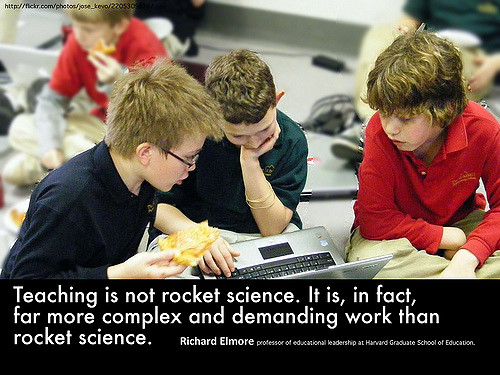Some Great Teaching
 |
| Photo credit: shareski via Foter.com / CC BY-NC |
With great teaching,
one does never get tired of observing the details...in a class plan of
an adaptive expert teacher, i.e., a GREAT teacher (Hattie, 2012;
Tokuhama-Espinosa, 2014), it is clear for all to see the pre, while and post teaching steps that have been carefully crafted for each stage. After all, "great teaching leaves nothing to chance" (Tokuhama-Espinosa, 2014)
It is really adamant that we, teachers, consider where our students are (their previous knowledge), how
to assess that (diagnostic tools),
where we want the class to go (objectives) and how to convey that to students (success criteria). After that,
there needs to be a structured guidance so that students know what is expected of them, what they need
to 'grab' along the way to perform the task and who they can count on every step of the way.
This stability
in the face of change provides students with a framework that releases their creativity
and cognitive flexibility to think outside the box and look for insights into the content. That is high level thinking and it demands
a lot of cognitive resources that would not be at their disposal
if the context for it to happen were not carefully planned by the teacher.
How do you secure your students the reserve they need
to be able to really learn?
References
Hattie, J.
(2012). Visible Learning for Teachers: Maximizing impact on learning. Routledge.
Tokuhama-Espinosa,
T. (2014). Making Classrooms Better: 50 Practical applications of Mind,
Brain and Education Science. New York: NY. Norton & Company


Comments
Post a Comment